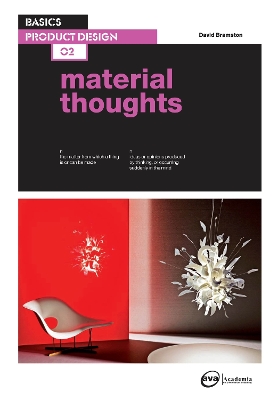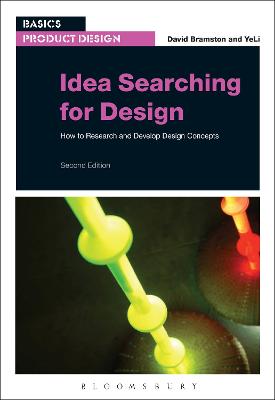Basics Product Design
3 primary works • 4 total works
Book 1
"Basics Product Design: Idea Searching" advocates a step-by-step approach to generating ideas and brainstorming. The author encourages an open mind in the development of ideas and teaches the reader to always question convention. The text is accompanied by a variety of case studies and examples of work taken from the best of contemporary product design.
Book 2
Basics Product Design: Material Thoughts is an inspirational introduction to the many different materials and processes used in product design, exploring their properties and how they have been used by some of the most innovative designers around the world. Throughout the book, David Bramston covers everything from dresses and bridges made from paper, to felt washbasins and acrylic cribs.
Key contributors include: Alessi, Chris Kabel, Demakersvan, droog, Drummond Masterton, Ettore Sottsass, Front, Gene Kiegel, Industreal, Inflate, Ingo Maurer, Jaime Hayon, Jurgen Bey, Kartell, Maarten Baas, Mathias Bengtsson, Matthias Pliessnig, Memphis, molo, Philippe Starck, Shigeru Ban, Simon Heijdens, Stuart Haygarth, Stuart Walker, Studio Libertiny, Tejo Remy and Rene Veenhuizen.
Key contributors include: Alessi, Chris Kabel, Demakersvan, droog, Drummond Masterton, Ettore Sottsass, Front, Gene Kiegel, Industreal, Inflate, Ingo Maurer, Jaime Hayon, Jurgen Bey, Kartell, Maarten Baas, Mathias Bengtsson, Matthias Pliessnig, Memphis, molo, Philippe Starck, Shigeru Ban, Simon Heijdens, Stuart Haygarth, Stuart Walker, Studio Libertiny, Tejo Remy and Rene Veenhuizen.
Book 3
"Basics Product Design: Visual Conversations" introduces design students to the art of communication in product design. David Bramston explains the process of translation from rough concept to fully-realised production. It emphasizes the importance of simplicity in creating effective sketches; examines methods of eliciting an emotional response in the use of 2D and 3D mixed media and explores the physical realisation of ideas in the form of models and prototypes. "Basics Product Design: Visual Conversations" puts design theory into a real-world context with beautiful examples and case studies from some of the worlds leading designers. The title comprises a comprehensive introduction to the language of product design.
The second edition of Idea Searching examines methods of generating and identifying ideas, and teaches you to understand what is being observed and recorded. Using lavish illustrations, concise case studies and practical examples, it explores how different experiences, contexts and references are important in identifying an idea that is appropriate for a particular individual, target audience or culture. Advocating a step-by-step approach to generating ideas and brainstorming, it encourages an open mind in the development of ideas and teaches you to always question convention.
The text is accompanied by a variety of case studies and examples of work from the world's best contemporary product designers. It also includes a number of new projects for students, to encourage further exploration of ideas.
The text is accompanied by a variety of case studies and examples of work from the world's best contemporary product designers. It also includes a number of new projects for students, to encourage further exploration of ideas.


